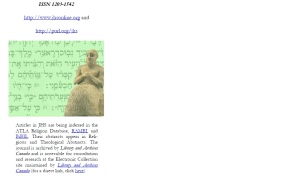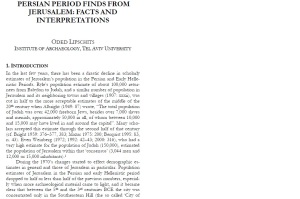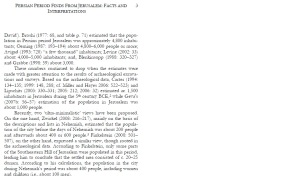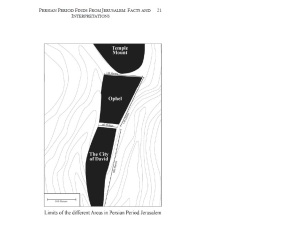Hebrew language was un-developed like its Un-civilised People, did not have vowels, and was added in 9th century, and New Masoretic Text was made and the Oldest Manuscripts come later than that, so Linguistics can not help on SAVAGE Literature like this.
INTERNAL EVIDENCES
Protestant Bibles has two locations
2 Kings 22: 8 Hilkiah the high priest said to Shaphan the secretary, “Look, I found the Book of the Law in the Lord’s Temple!” Hilkiah gave the book to Shaphan, and Shaphan read it. He went to King Josiah and told him what happened. Shaphan said, “Your servants have gathered all the money that was in the Temple. They gave it to the men who supervise the work on the Lord’s Temple.”10 Then he told the king, “And Hilkiah the priest also gave this book to me.” Then Shaphan read the book to the king. 11 When the king heard the words of the Book of the Law, he tore his clothes to show he was sad and upset.
Nehemiah 8:1 Israelites met together in the seventh month of the year. They were united and in complete agreement. They all met together in the open place in front of the Water Gate. All the people asked Ezra the teacher to bring out the Book of the Law of Moses, which the Lord had given to the Israelites. 2 So Ezra the priest brought the law before those who had met together.
5 So Ezra opened the book. All the people could see him because he was standing above them on the high stage. As he opened the Book of the Law, all the people stood up. 6 Ezra praised the Lord, the great God, and all the people held up their hands and said, “Amen! Amen!” Then all the people bowed down and put their faces low to the ground and they worshiped the Lord.




INTERNAL EVIDENCES
Protestant Bibles has two locations
2 Kings 22: 8 Hilkiah the high priest said to Shaphan the secretary, “Look, I found the Book of the Law in the Lord’s Temple!” Hilkiah gave the book to Shaphan, and Shaphan read it. He went to King Josiah and told him what happened. Shaphan said, “Your servants have gathered all the money that was in the Temple. They gave it to the men who supervise the work on the Lord’s Temple.”10 Then he told the king, “And Hilkiah the priest also gave this book to me.” Then Shaphan read the book to the king. 11 When the king heard the words of the Book of the Law, he tore his clothes to show he was sad and upset.
The above was As per Bible Tales in Josiah time.
5 So Ezra opened the book. All the people could see him because he was standing above them on the high stage. As he opened the Book of the Law, all the people stood up. 6 Ezra praised the Lord, the great God, and all the people held up their hands and said, “Amen! Amen!” Then all the people bowed down and put their faces low to the ground and they worshiped the Lord.
The above was As per Bible Tales after return from Babylon exile in 5th or 4th century CE. As Nehemiah's name is also said- this must have been wtitten later than the Tale EVENT.
Nehemiah Also has a Tale of reconstruction of Jerusalem Temple. As per Archaeology not a single stone has been found of the period and the total population of Jerusalem in 4th century was less than 1000 people
PERSIAN PERIOD FINDS FROM JERUSALEM: FACTS AND INTERPRETATIONS -ODED LIPSCHITS; INSTITUTE OF ARCHAEOLOGY, TEL AVIV UNIVERSITY.
http://www.jhsonline.org/Articles/article_122.pdf




On the one hand, Zwickel (2008: 216–217), mainly on the basis of the descriptions and lists in Nehemiah, estimated that the population of the city before the days of Nehemiah was about 200 people and afterwards about 400 or 600 people.3 Finkelstein (2008: 501– 507), on the other hand, expressed a similar view, though rooted in the archaeological data. According to Finkelstein, only some parts of the Southeastern Hill of Jerusalem were populated in this period, leading him to conclude that the settled area consisted of c. 20–25 dunam. According to his calculations, the population in the city during Nehemiah’s period was about 400 people, including women and children (i.e., about 100 men).
The final conclusion is The settled area of Jerusalem during the Persian period included the 28–30 dunams of the City of David plus the 20 dunams of the Ophel, which altogether amounts to about 50 dunams. Even if parts of the Ophel hill were built up with public buildings, and only part of it was settled with private houses, this area should be included in the settled area of Jerusalem during the Persian and Early Hellenistic periods. Calculating the population of Jerusalem according to the lower coefficient of 20 people per one built-up dunam brings the population estimate to about 1000 people;; and according to the higher coefficient of 25 people per one built-up dunam to about 1,250 people. This population estimate is very close to the accepted estimations in research in the last years – those of Carter (1999: 288) and Lipschits (2005: 271;; 2006: 32;;) – of about 60 dunams and 1,250–1,500 people respectively, or that of Geva (2007b: 56–57) of a settled area of 60 dunams and population estimate of about 1,000 people. Jerusalem was no doubt a small city, but the ultra-minimalistic views expressed by Zwickel and Finkelstein should be rejected along with their implications for the study of the Biblical, archaeological and historical research of the Persian period.
The final conclusion is The settled area of Jerusalem during the Persian period included the 28–30 dunams of the City of David plus the 20 dunams of the Ophel, which altogether amounts to about 50 dunams. Even if parts of the Ophel hill were built up with public buildings, and only part of it was settled with private houses, this area should be included in the settled area of Jerusalem during the Persian and Early Hellenistic periods. Calculating the population of Jerusalem according to the lower coefficient of 20 people per one built-up dunam brings the population estimate to about 1000 people;; and according to the higher coefficient of 25 people per one built-up dunam to about 1,250 people. This population estimate is very close to the accepted estimations in research in the last years – those of Carter (1999: 288) and Lipschits (2005: 271;; 2006: 32;;) – of about 60 dunams and 1,250–1,500 people respectively, or that of Geva (2007b: 56–57) of a settled area of 60 dunams and population estimate of about 1,000 people. Jerusalem was no doubt a small city, but the ultra-minimalistic views expressed by Zwickel and Finkelstein should be rejected along with their implications for the study of the Biblical, archaeological and historical research of the Persian period.
Nehemiah 7: 7-66 Gives various name and totals 42,360 people- male alone.
Ezra 2:64 has same number - but list wont tally.

No comments:
Post a Comment